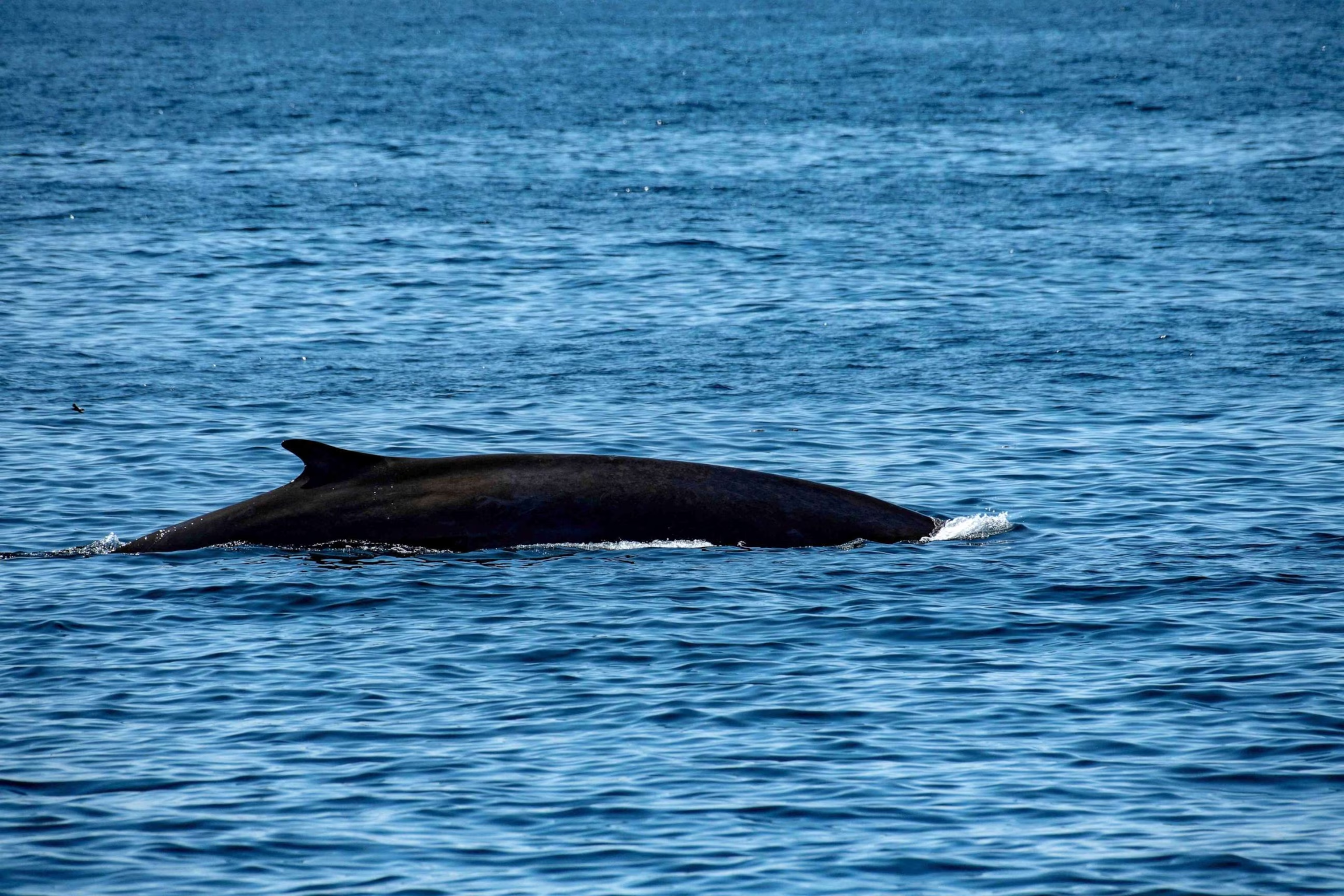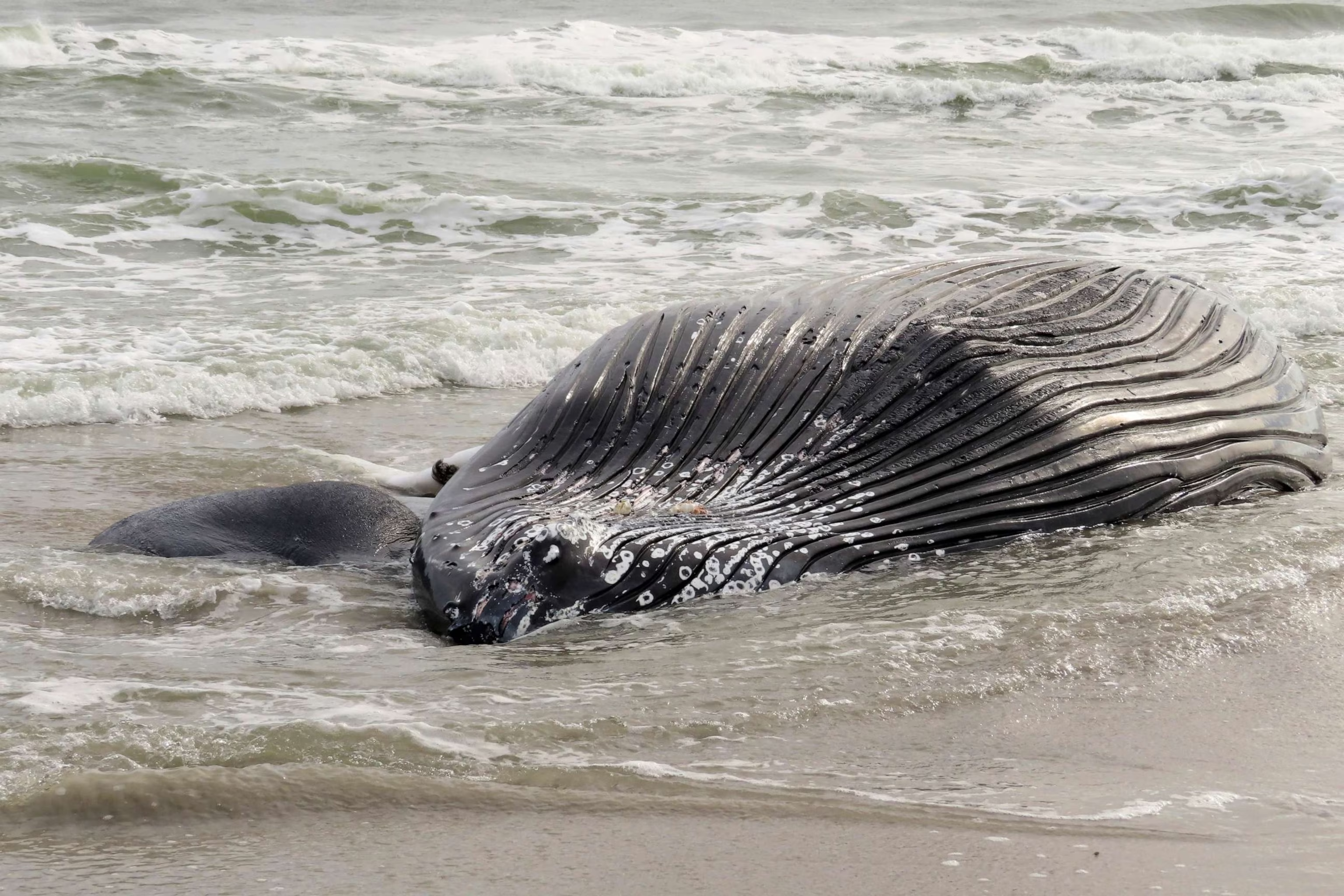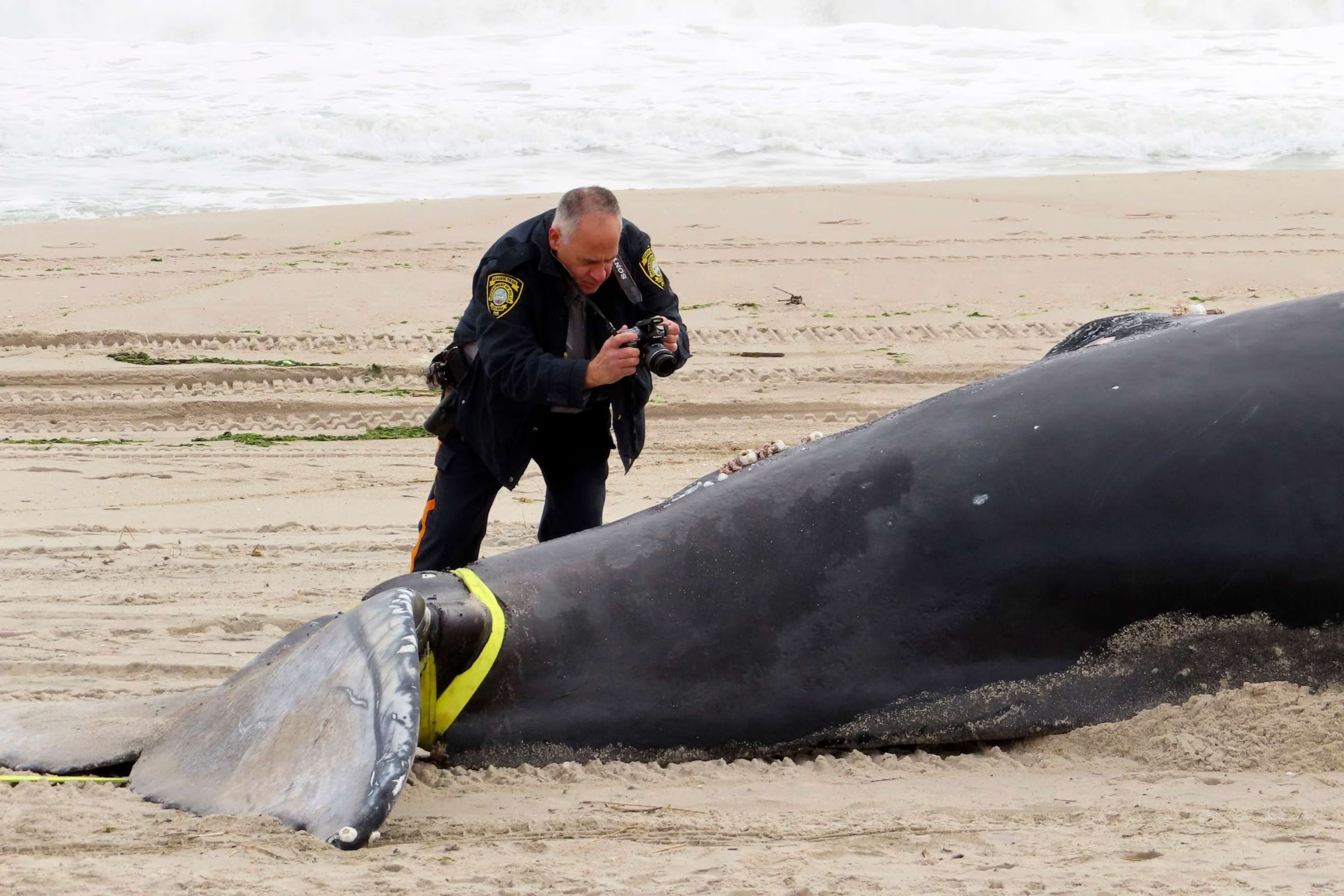Ocean scientists concerned over uptick of whale deaths on Northeast coasts
There's been a common sight on Northeast beaches this summer: an alarmingly rise in whale carcasses washing in from the Atlantic Ocean.
Scientists are becoming increasingly concerned over the number of dead whales, an animal that provides a lens into the general condition of the ocean and the beings that reside there, Chris Robbins, associate director of science for Ocean Conservancy, an environmental nonprofit, told ABC News.
"They're like the marine equivalent of the canary in the coal mine in that they're giving us insights into the health of the broader marine ecosystem by how they respond to various drivers and threats of the ocean," Robbins said.
MORE: Scientists discover new species of miniature ancient whale that lived about 41 million years ago
Whale strandings in the Northeast are not new. But the uptick in deaths in recent decades, which has increased exponentially, are concerning the marine science community, experts said.
In the 1980s and 1990s, the Northeast would see just one dead whale wash ashore, Robert DiGiovanni, the director of the Atlantic Marine Conservation Society, told ABC News.

That began to change in 2001, when larger whale stranding events were recorded in the spring and winter, or the migratory periods, DiGiovanni said.
Since 2016, 208 whale strandings have occurred on Atlantic coasts from Maine to Florida, records kept by the National Oceanic and Atmospheric Administration show. More than a third of those deaths -- 72-- have occurred in New York, mostly on Long Island and the Rockaways.
There has been an especially significant uptick in whale mortality since 2017, which saw the beginning of several unusual mortality events, Robbins said. More than 90 whales died in U.S. waters in 2017 and 80 in 2018, compared to 55 deaths in 2007, according to NOAA.
MORE: Loss of sea ice putting migrating beluga whales in danger
Historically, whales typically die after being struck by a vessel, or due to encounters or entanglements with fishing gear, experts said.
The immense amount of energy it takes to swim free from entanglements is energy whales would otherwise need to use to feed, reproduce or avoid predators.
North Atlantic right whales, whose precarious population continues to dwindle, are especially vulnerable to these threats, especially since their feeding grounds and migratory routes are in the vicinity of major ports along the Atlantic coastline, Robbins said.

The species is listed as endangered by the International Union for Conservation of Nature's Red List of Threatened Species, with only about 350 left in the world.
Climate change may be playing a major role in the increase of deaths. As ocean waters warm, it is creating major changes in oceanographic conditions, Robbins said.
Researchers have recorded seasonal mismatches for the blooming of zooplankton, the main food source of right whales, and the time in which the whales arrive along their migratory route.
The hypothesis is that the zooplankton are responding to temperature cues and blooming earlier in the season, before the right whales have an opportunity to forage or feed, Robbins said.
MORE: Cruise line apologizes after dozens of whales slaughtered in front of passengers
Not only is the species not getting enough plankton to sustain their nutritional and energy needs, they are also changing their migratory patterns to new locations, like to the Gulf of St. Lawrence near Canada, where there are less protections in place to prevent boat strikes and entanglements in fishing gear.
Plastic pollution in oceans are also an emerging threat for whales, especially since there is commonality between whale feeding areas and where the highest concentration of garbage is, according to a study published in Nature last year.
The largest animal in the world, the blue whale, ingests an estimated 10 million pieces of plastic per day, the researchers of the study found.
"They feel like their bellies are full when they're getting fewer calories for the effort, which means they need to use more energy to consume more prey to make up the difference in calories," Robbins said. This means they have less energy for swimming, reproducing and predator avoidance."

Other consequences of plastic consumption include reduced reproduction and well as a reduction in growth and longevity. In addition, the lacerations that larger plastics can cause to the intestinal tracts of digestive tracts of whales cause inflammation and infections, Robbins said.
For the minke whale, the increase in deaths is likely due to biological processes from infectious diseases, DiGiovanni said.
An uptick in whale deaths was also seen all over the world this summer.
MORE: Australia's humpback populations rebound, raising hopes of marine scientists
In July, there were mass stranding events in Scotland and Australia. In Ireland, researchers were worried that a 60-foot bloated fin whale would explode.
There may not be a common thread in the whale strandings and deaths that are occurring around the world, Stacey Hedman, director of communications for the International Fund for Animal Welfare, told ABC News via email.
Some species of whales could be seeing larger upticks in strandings due to population increases. The increase in beached whales also coincides with an increase of whale sightings closer to the coast, DiGiovanni said.
The whales are likely following food sources, which could indicate a healthier ecosystem in some of the areas, DiGiovanni said.
Researchers are striving to understand the reason behind the whale deaths.
"We're always concerned when any whale washes up," DiGiovanni said. "We want to understand more about what they're doing."
Disclaimer: The copyright of this article belongs to the original author. Reposting this article is solely for the purpose of information dissemination and does not constitute any investment advice. If there is any infringement, please contact us immediately. We will make corrections or deletions as necessary. Thank you.




